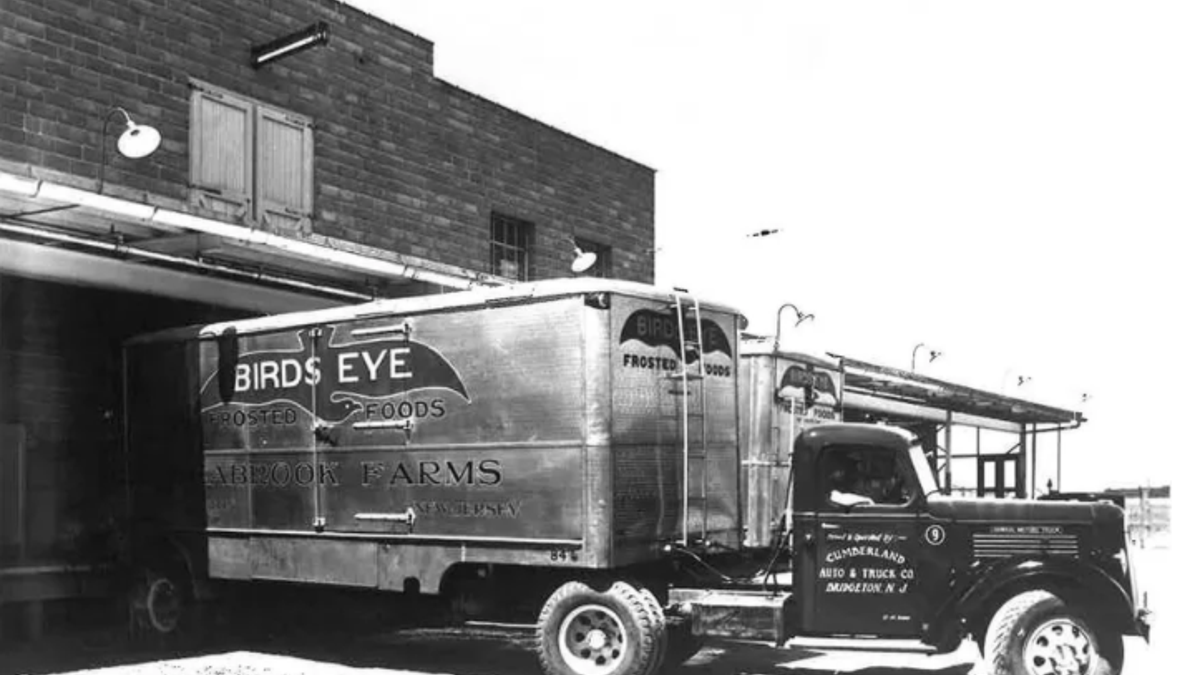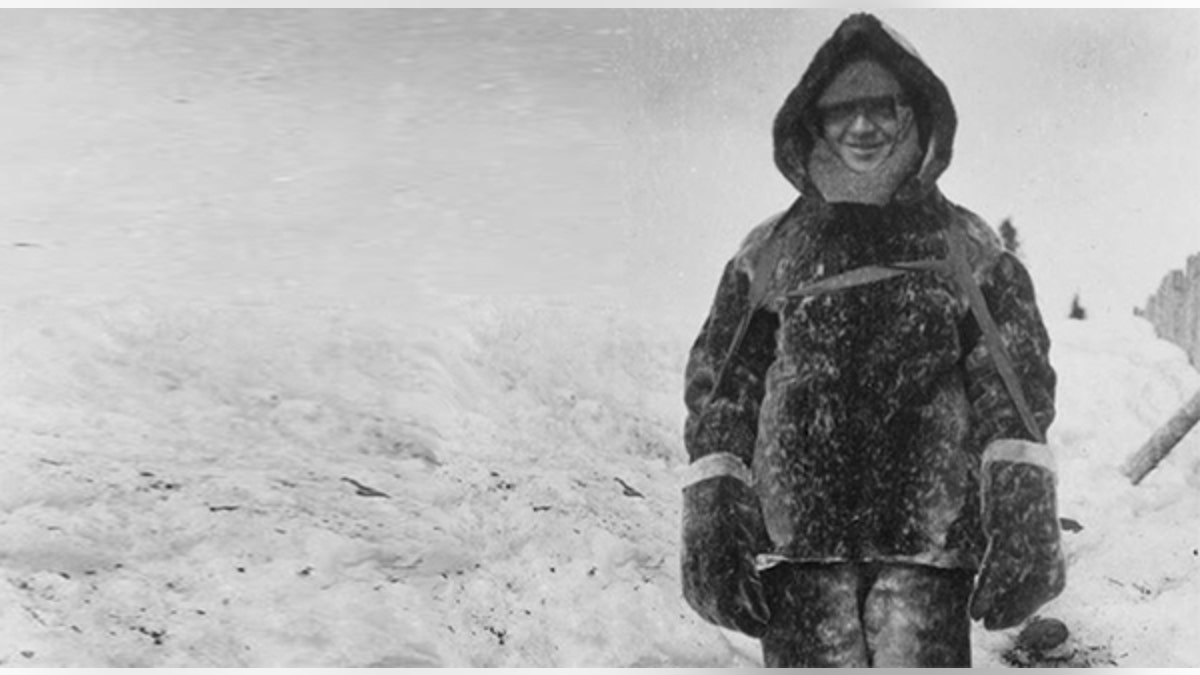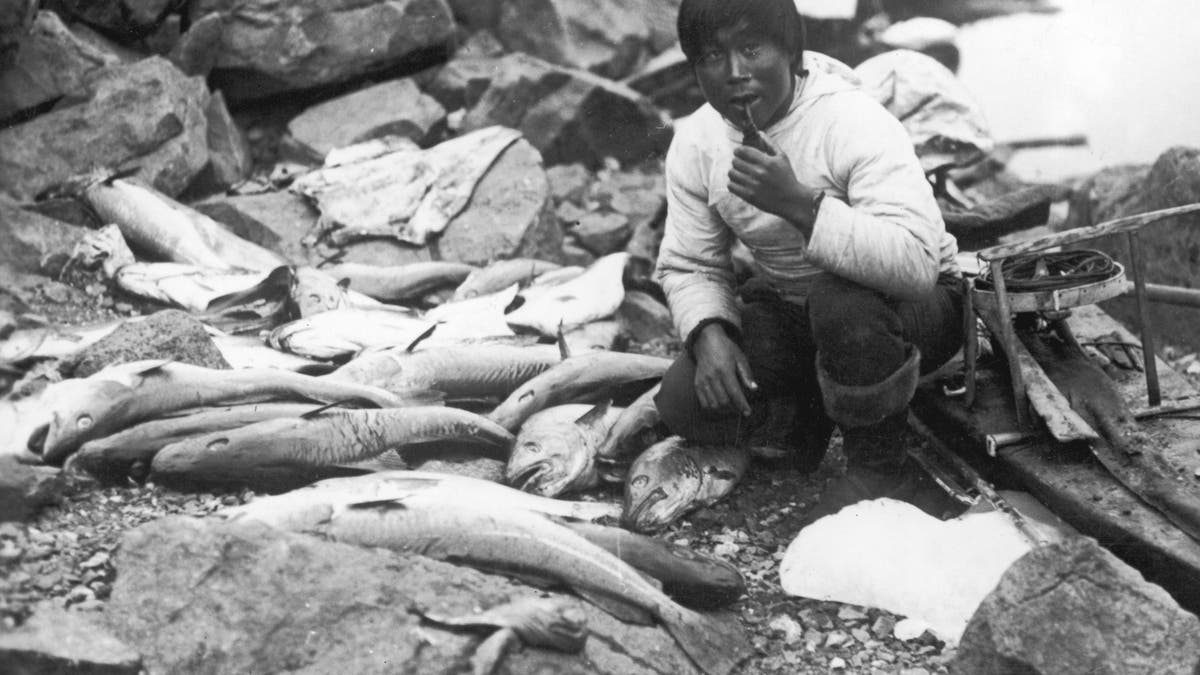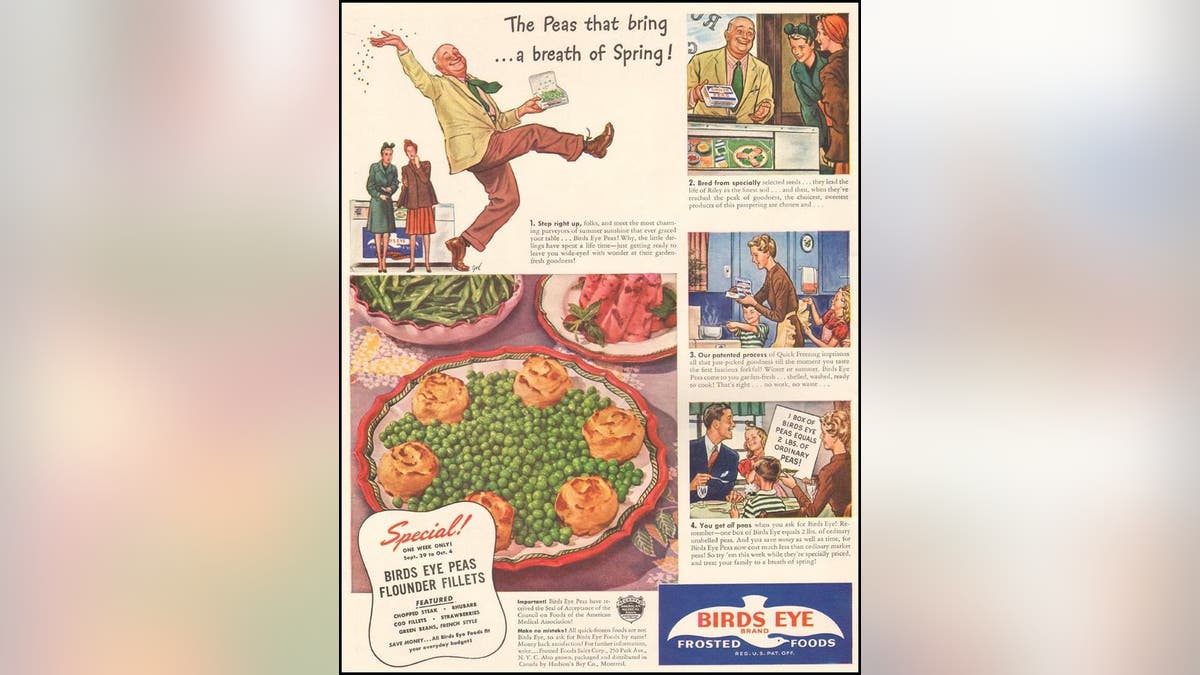Clarence Birdseye proved you can’t judge a book by its cover.
The Brooklyn native and frozen food pioneer looked scholarly in his spectacles, as if he belonged at the head of a college lecture hall.
He was in fact a college dropout. The slight, narrow-shouldered free spirit instead lived a life of adventure. He explored remote areas of the world, from the frigid coast of Newfoundland to the steamy sugarcane plantations of South America.
Humble-looking ol’ Clarence craved the outdoors and loved hunting.
Birdseye, among many other quirks, possessed a voracious appetite for harvesting and eating anything that walked, waddled, chirped, crawled, swam or slithered.
In his years of exploring Labrador, Canada, or working for the U.S. government in the American West, he trapped and cooked mice, chipmunks, porcupine, otter and rattlesnake, to name just a few of his unusual edibles.
Clarence Birdseye, credited with some 300 inventions in his lifetime, is best known for making frozen food accessible to millions of consumers. (Courtesy Conagra Brands)
He raved about sherry-brined lynx and the “fine” taste of gull gravy.
“I arrived by dog team at the North West River,” he wrote in one notably enthusiastic account of his carnivorous Canadian diet.
Birdseye ate anything that walked, waddled, chirped, crawled, swam or slithered.
“And after thawing out, sat down to one of the most scrumptious meals I ever ate. The pièce de résistance was lynx meat, which had been soaked for a month in sherry, pan-stewed and served in a brown gravy.’”
Birdseye’s keen taste buds wound up reshaping the way Americans shop, eat — and even plan for disaster.
MEET THE AMERICAN WHO INVENTED BUFFALO WINGS, DISRUPTED ENTIRE CHICKEN INDUSTRY
He founded Birdseye Seafood Inc. in 1924, pioneering and patenting new ways to both flash-freeze and market food for American consumers.
There’s a good chance you even have frozen vegetables bearing his name in your freezer right now.

A truck advertising Birds Eye Frosted Foods, date unknown. Clarence Birdseye founded his frozen food company in 1924. (Courtesy Conagra Brands)
Birds Eye — two words — is a prominent label in the frozen food aisle of American and British supermarkets, owned today by international powerhouse Conagra Brands.
The appeal of frozen foods was evident during the onset of the COVID-19 pandemic in 2020, when consumers stockpiled long-lasting sustenance for the unknown days ahead.
The American Frozen Food Institute reported $65.1 billion in retail sales in 2020, a 21% increase over sales in 2019. Frozen food remains red hot, with $74 billion in sales in 2023.
‘An odd sort of guy’
Clarence “Bob” Birdseye was born in Brooklyn, N.Y., on Dec. 9, 1886, to attorney Clarence Frank and Ada Underwood Birdseye.
His family moved to Montclair, N.J., when he was a teenager. High school cooking classes there fueled his innate interest in food.

Author and food historian Mark Kurlansky was inspired to write about Clarence Birdseye after the inventor made appearances in many of his other books. (Courtesy Anchor Books)
“At the age of 10 he was hunting and exporting live muskrats and teaching himself taxidermy,” NPR wrote in a 2012 biography.
“He studied science in college, but had to drop out for financial reasons. Forced to support himself, he joined various scientific expeditions that took him to remote places, including Labrador, where he spent several years in the fur business.”
Celebrated food historian and Birdseye biographer Mark Kurlansky told Fox News Digital, “He was an odd sort of guy who had an impact on a lot of different things, including a huge influence on American food.”
MEET THE AMERICAN WHO POPULARIZED CHINESE FOOD IN THE US: IMMIGRANT CHEF JOYCE CHEN
“He was a product of the industrial revolution and thought everything, including food, should be industrialized.”
The author was inspired to write about Clarence Birdseye after the innovator made frequent appearances in many of Kurlansky’s other works, including his landmark food history, “Cod: A Biography of the Fish that Changed the World.”

Clarence Birdseye was inspired to pursue innovations in frozen food for consumers after watching the Inuit fisherman of Labrador freeze their catch. (Courtesy Conagra Brands)
Kurlansky wrote two books about him: “Birdseye: The Adventures of a Curious Man” in 2013; and, for middle-school students, “Frozen in Time: Clarence Birdseye’s Outrageous Idea About Frozen Food” in 2014.
Birdseye’s interests and inventions extended far beyond food, Kurlansky said.
“Birdseye was a product of the industrial revolution and thought everything, including food, should be industrialized.” — author Mark Kurlansky
He patented the reflecting lamps commonly used on job sites today. He helped the federal government combat Rocky Mountain spotted fever by showing that it was transmitted to humans through animals.
Later in life, he also found new adventure in Colombia, developing a process to turn sugarcane residue into paper.
Birdseye developed some 300 patents and inventions in his lifetime, Kurlansky said.
None had more impact on the nation, however, than his work in frozen food.
Inspired by Inuits
Birdseye’s Eureka moment came during dog-sled expeditions across Labrador.
He noticed that native Inuit fishermen harnessed the power of wind and ice to flash-freeze their catch.
CLICK HERE TO SUBSCRIBE TO FOX NATION
“Fresh food was a very urgent problem in Labrador,” Birdseye wrote, in an oft-repeated account of his work.
“I found that foods frozen very quickly in the dead of winter kept their freshness as long as they were held at a low temperature.”
The problem was replicating the flash-freezing process far from the icy shores of the Canadian coast.
“Birdseye, the biologist, saw that the fish were frozen too quickly for ice crystals to form and ruin their cellular structure,” writes the Lemelson-MIT Program, an academic organization devoted to cultivating inventors and innovators.

An Inuit man with his catch of fish, Greenland, circa 1930. Clarence Birdseye was inspired to pioneer commercial frozen food by watching Inuit fishermen. (Photo by Hulton Archive/Getty Images)
“Birdseye, the businessman, saw that the public back home would gladly pay for such frozen foods if he could deliver them. He returned to New York and, in 1924, founded Birdseye Seafoods, Inc.”
He set up General Seafood Corp. a year later in Gloucester, Mass., to be near one of the nation’s most prominent and productive fishing ports.
He developed a process that would rapidly freeze fish and vegetables.
“In the case of fish or meat,” the application stated, “slow freezing disrupts the cells of the animal tissue, with loss of the pristine qualities and flavors and rapid deterioration after thawing.”

Clarence Birdseye filed for U.S. Patent No. 1,773,079 in 1927, receiving it in 1930. His process would rapidly freeze fish and vegetables so that “the pristine qualities and flavors of the product are retained.” (U.S. Patent and Trademark Office)
His rapid-freezing process ensured “the pristine qualities and flavors of the product are retained,” he wrote on a 1927 patent application.
Chance encounter changed food industry
Birdseye desperately lacked capital, however, when a chance encounter with business tycoon Marjorie Merriweather Post changed his fortunes.
The encounter also changed the global food industry.
Birdseye’s patented flash-freezing process ensured that “the pristine qualities and flavors of the product are retained.”
Post had inherited Postum Cereal Company from her father in 1914. It’s known today as General Foods. She was a hugely influential businesswoman.
Among other notable accomplishments, Post built a mansion in Palm Beach, Fla., in the 1920s that she dubbed Mar-A-Lago.
Post happened to be sailing through Gloucester in 1926 when she discovered Birdseye’s frozen food company, at least according to company legend.

Birds Eye brand frozen chopped spinach. (Daniel Acker/Bloomberg via Getty Images)
Details of the story are sketchy, writes Kurlansky in “Frozen in Time.”
What’s not disputed is the result: Birdseye’s “company was of obvious appeal to the Postum Cereal Company. General Seafoods had developed the ideas and technology for an entirely new food industry,” Kurlansky writes.
For more Lifestyle articles, visit foxnews.com/lifestyle
“Eventually, Postum secured [Birdseye’s] company for a record $22 million.”
The deal in 1929 gave Birdseye the resources needed to bring frozen food to American consumers.
Birdseye improved health of the industrialized world
Clarence Birdseye died on Oct. 7, 1956 at a home he kept at the Gramercy Park Hotel in Manhattan.

Clarence Birdseye launched Birds Eye Frosted Foods in 1924. “Our patented process of quick freezing imprisons all that just-picked goodness,” reads an undated ad for Birds Eye frozen peas. (Courtesy Conagra Brands)
He spent his final days, after a life of adventure and innovation, battling a heart ailment in the city in which he was born.
He was lauded for his vision and ability to turn his ideas conceived on the ice of Labrador into an international food-industry empire.
CLICK HERE TO SIGN UP FOR OUR LIFESTYLE NEWSLETTER
“At the start he could afford to spend only $7 on equipment, including an electric fan, ice and salt. Later, a friend lent him the corner of an ice house to carry on his work,” The New York Times reported in his obituary.
“We can say that Clarence Birdseye has indirectly improved both the health and convenience of virtually everyone in the industrialized world”
“After his return from [Labrador], Mr. Birdseye began the experiment that led to the development of his [flash-freezing] process. The development not only brought a fortune to Mr. Birdseye, but helped revive the Massachusetts fishing industry.”
MEET THE AMERICAN WHO INVENTED LIGHT BEER
Frozen food today is a goliath of global consumer culture, with $252.2 billion in worldwide revenue in 2021, according to Polaris Market Research.
The company predicts global frozen food sales to reach $389.9 billion by 2030.

Birds Eye frozen foods are a household in the United States. Founder and explorer Clarence Birdseye was inspired to pursue innovations in frozen food by watching the Inuit fisherman of Labrador freeze their catch. (Daniel Acker/Bloomberg via Getty Images; courtesy Conagra Brands)
Birdseye “is credited with increasing the quality of the American diet by providing high-quality foods for long-term preservation without drying, pickling or canning,” proclaims the Inventors Hall of Fame, which inducted the innovator in 2005.
CLICK HERE TO GET THE FOX NEWS APP
“Today, we especially appreciate that Birdseye’s process, still basically in use, preserves food’s nutrients as well as its flavor,” said the Lemelson-MIT Program for innovators.
To read more stories in this unique “Meet the American Who…” series from Fox News Digital, click here.
“In fact, we can say that Clarence Birdseye has indirectly improved both the health and convenience of virtually everyone in the industrialized world.”